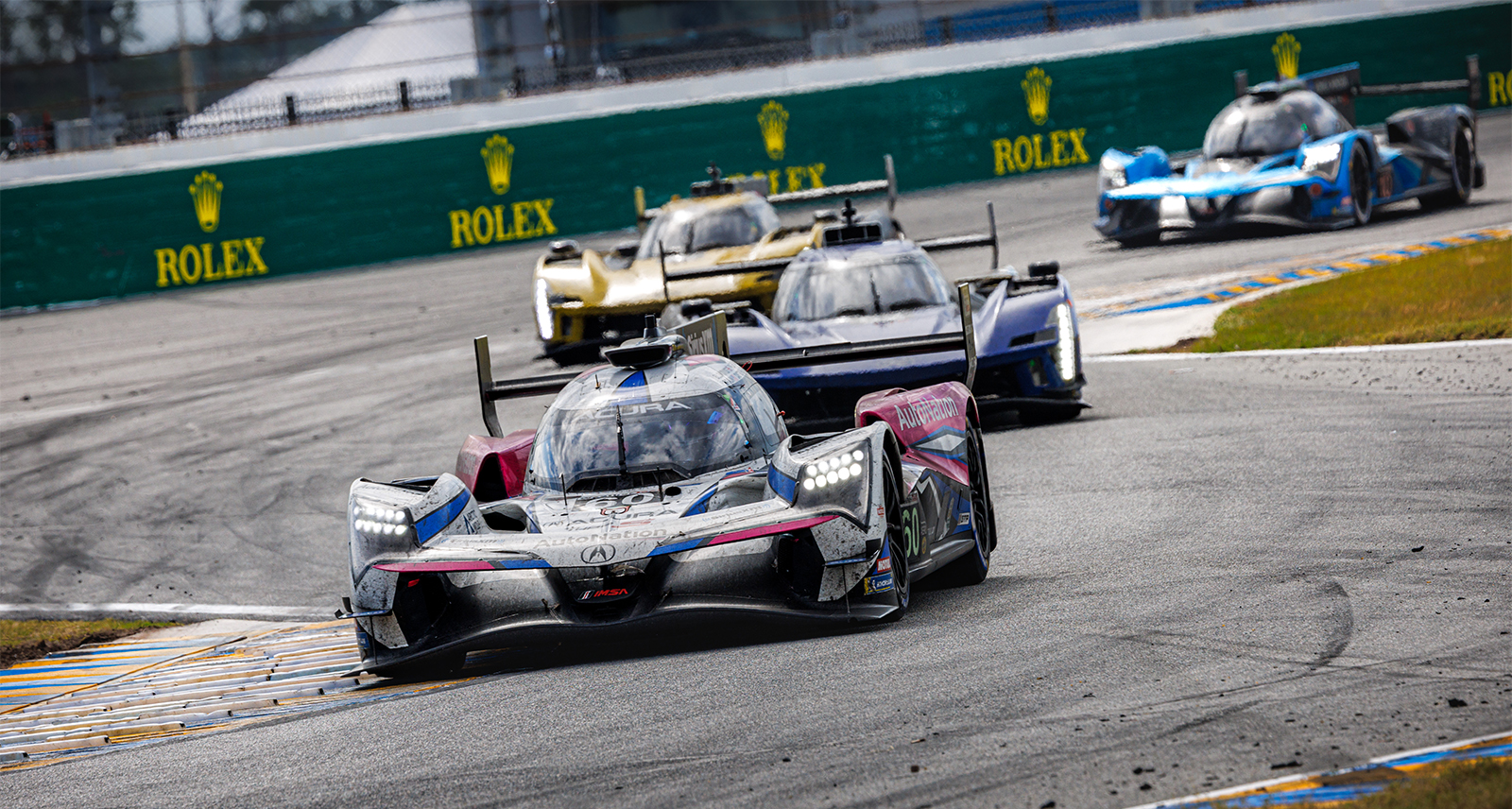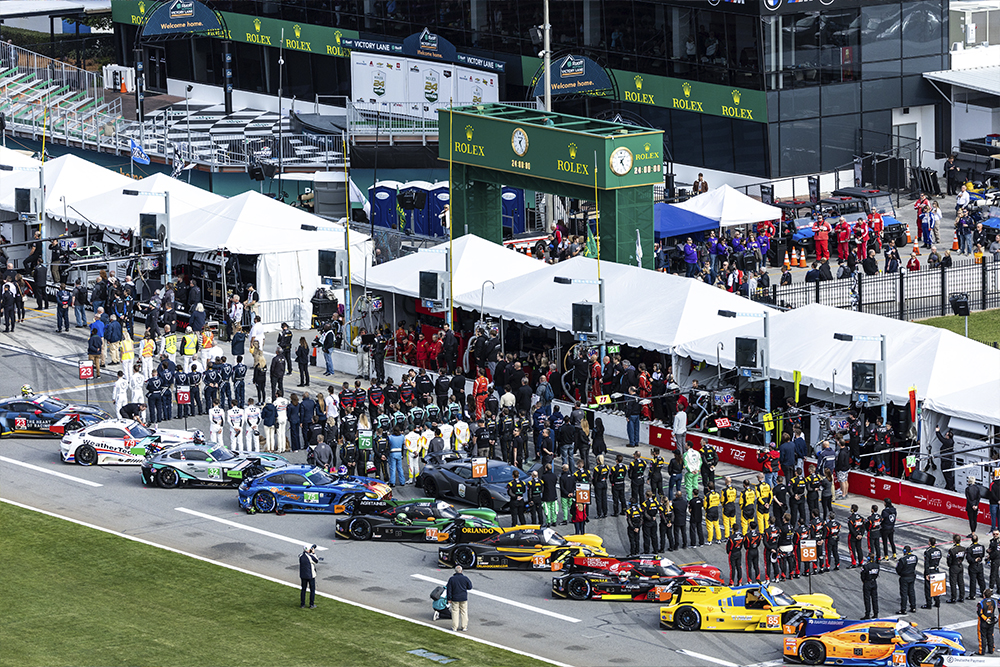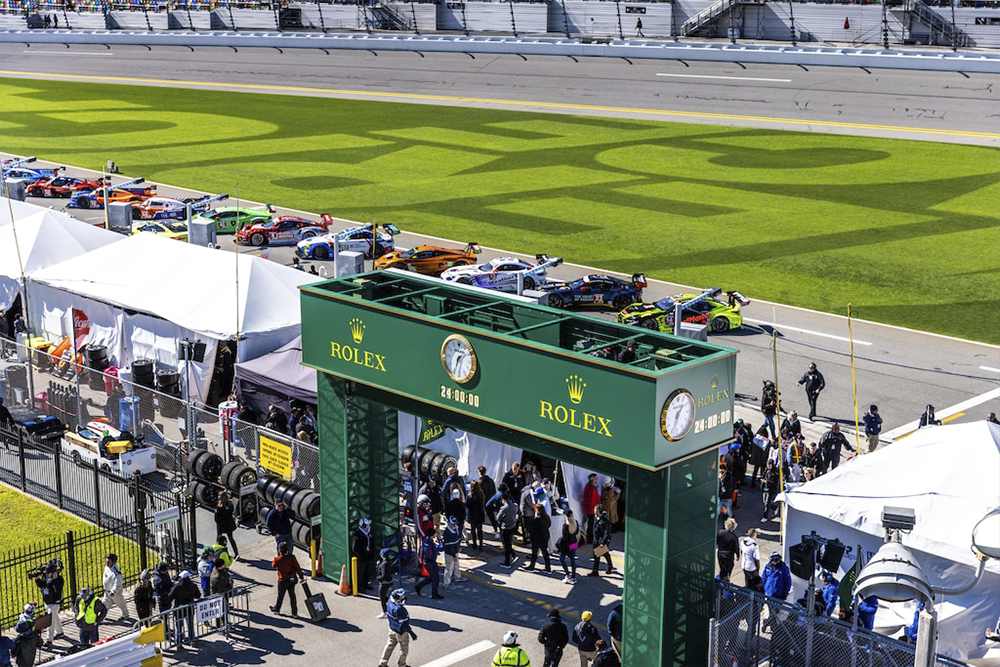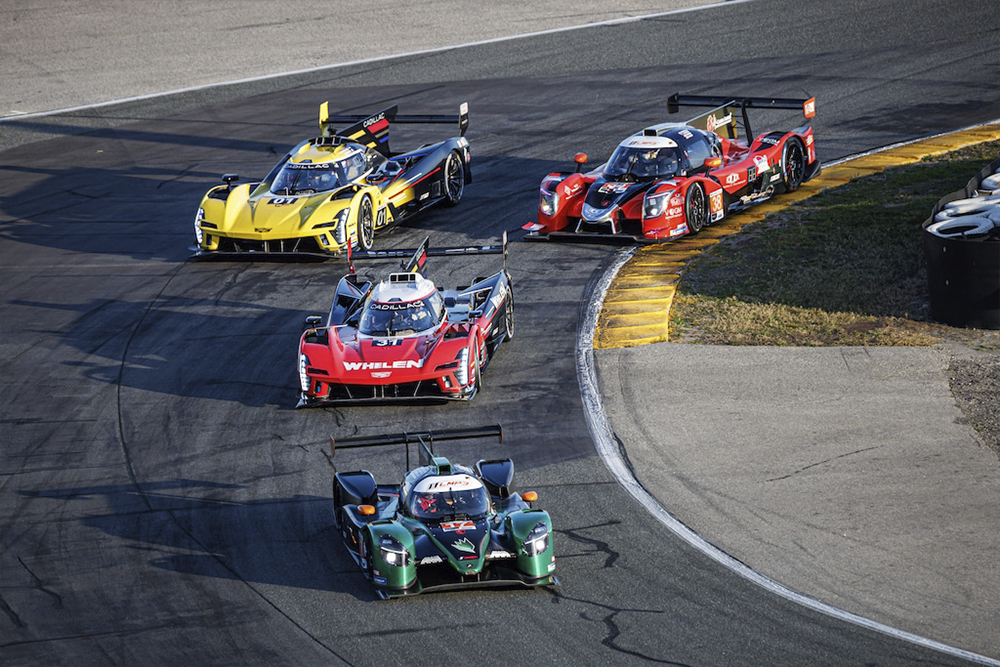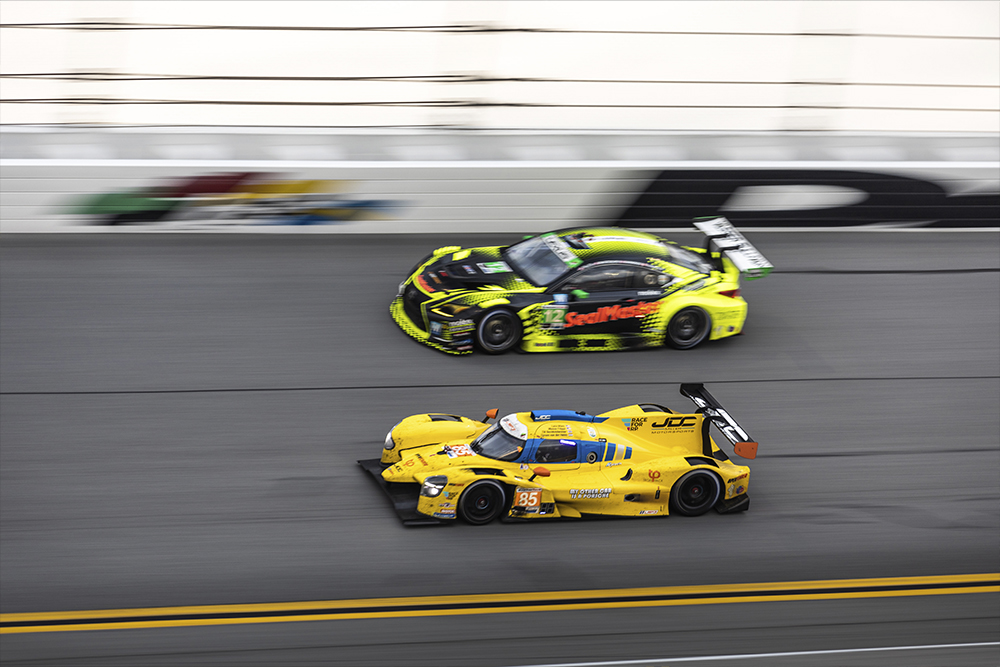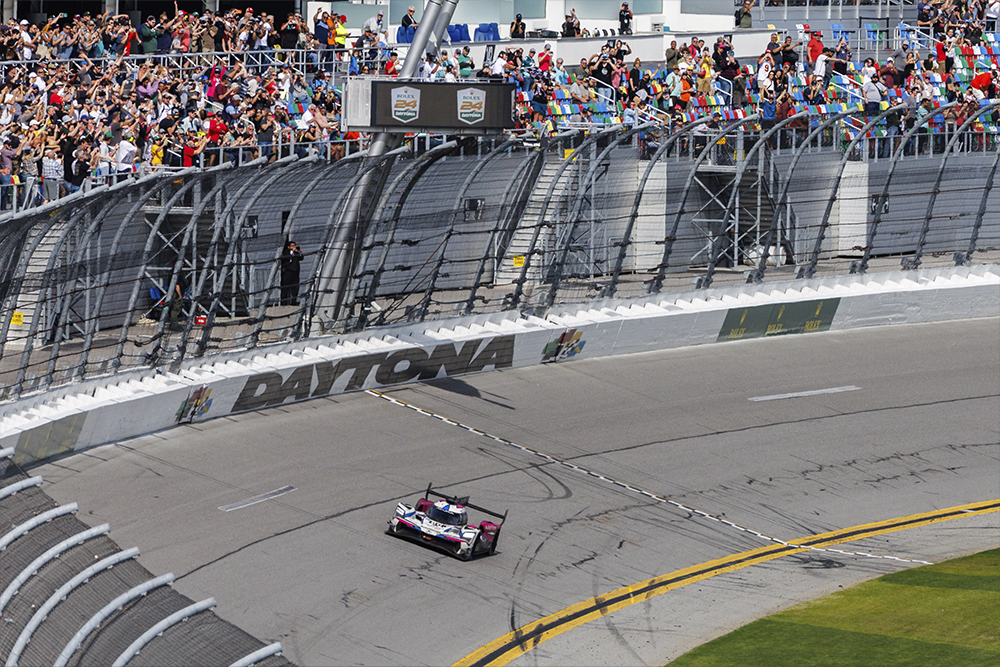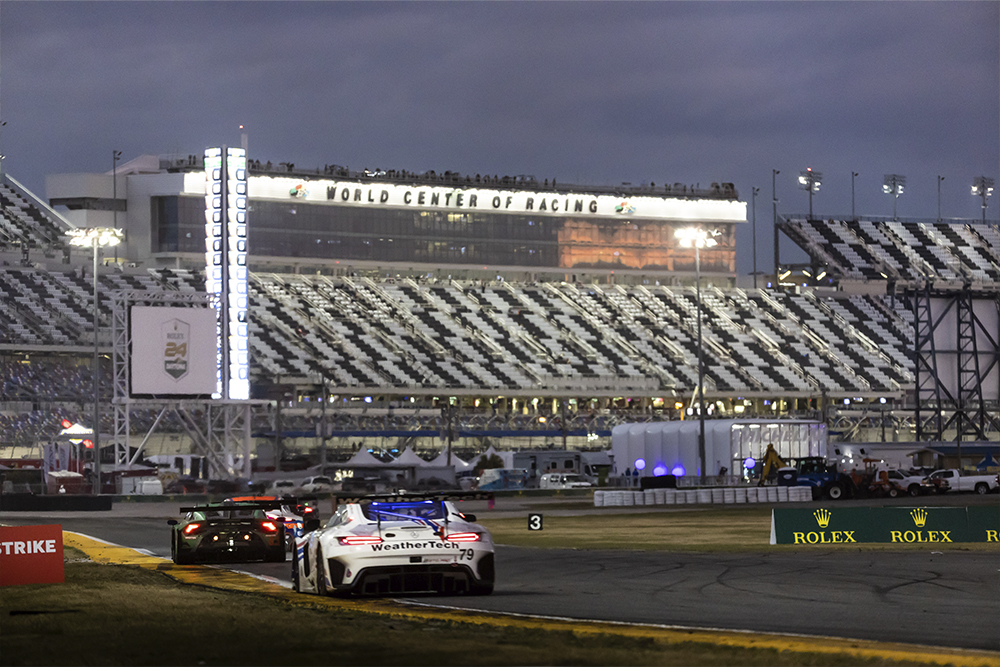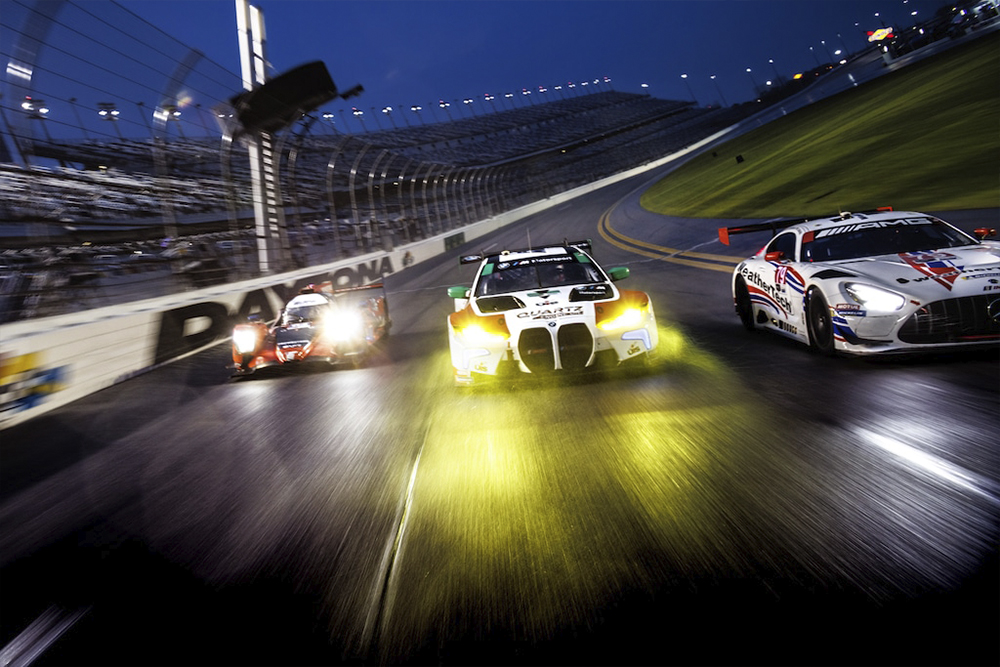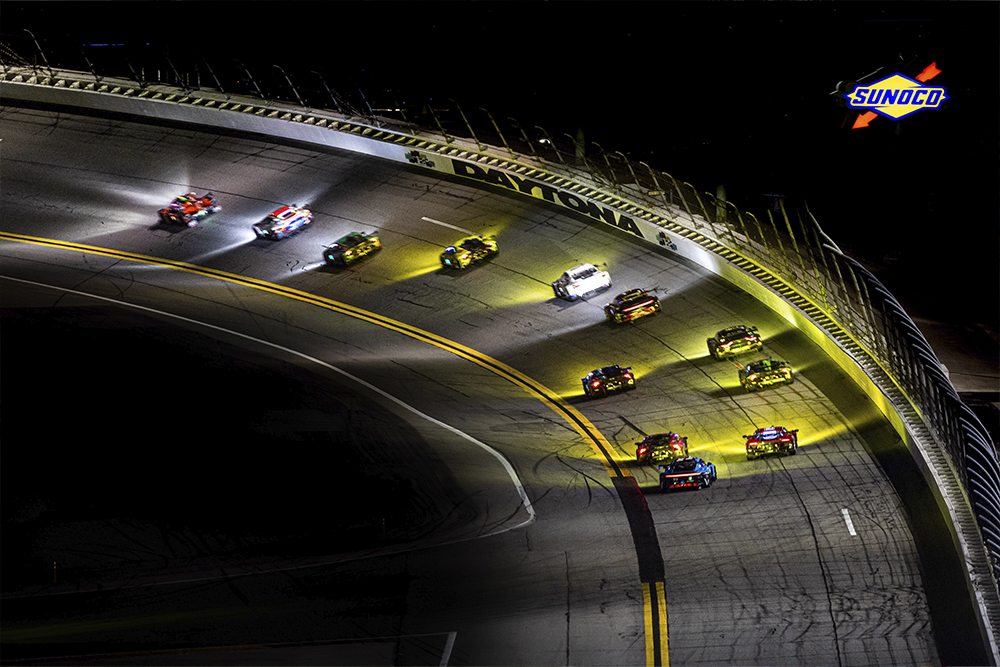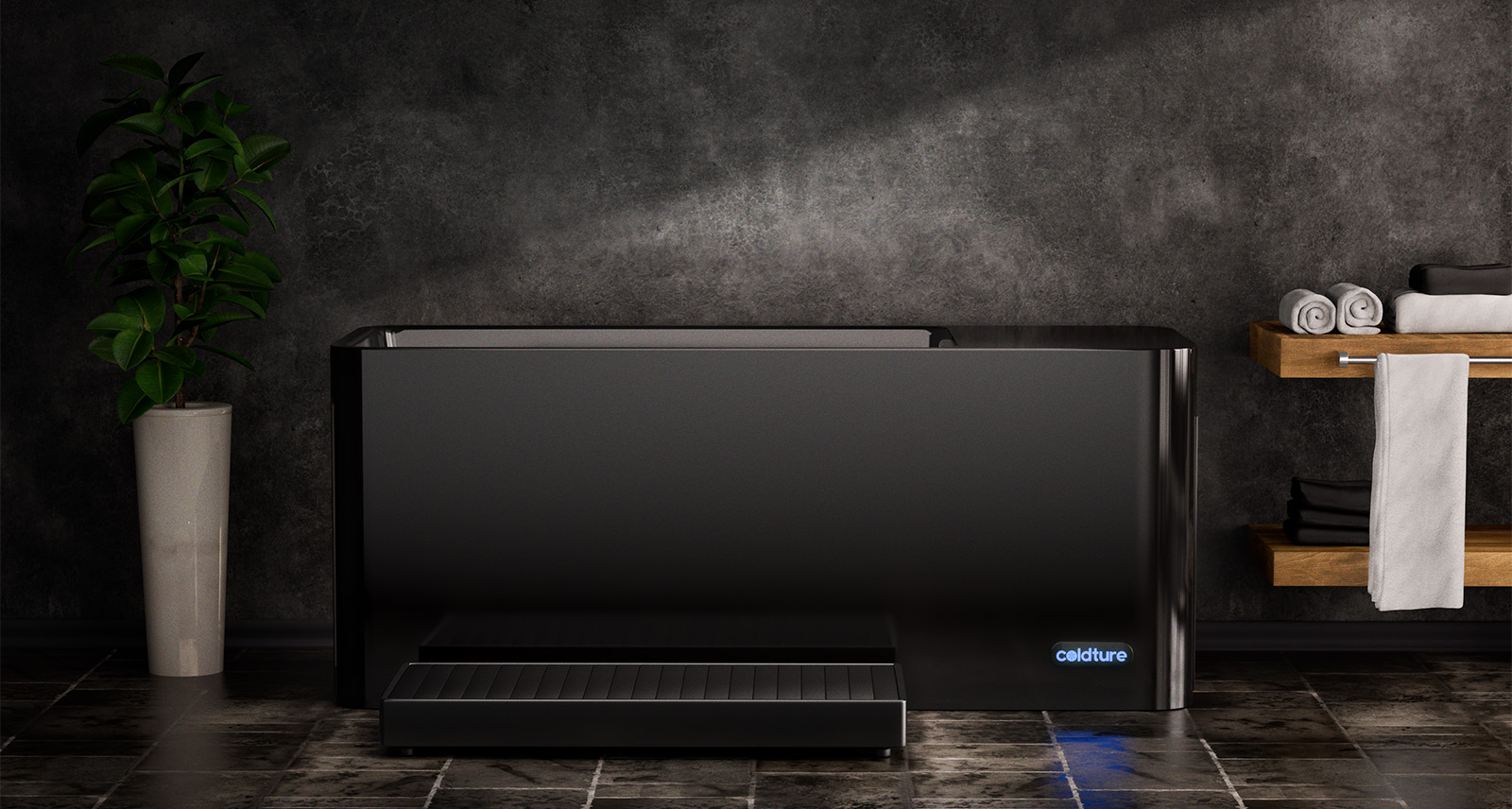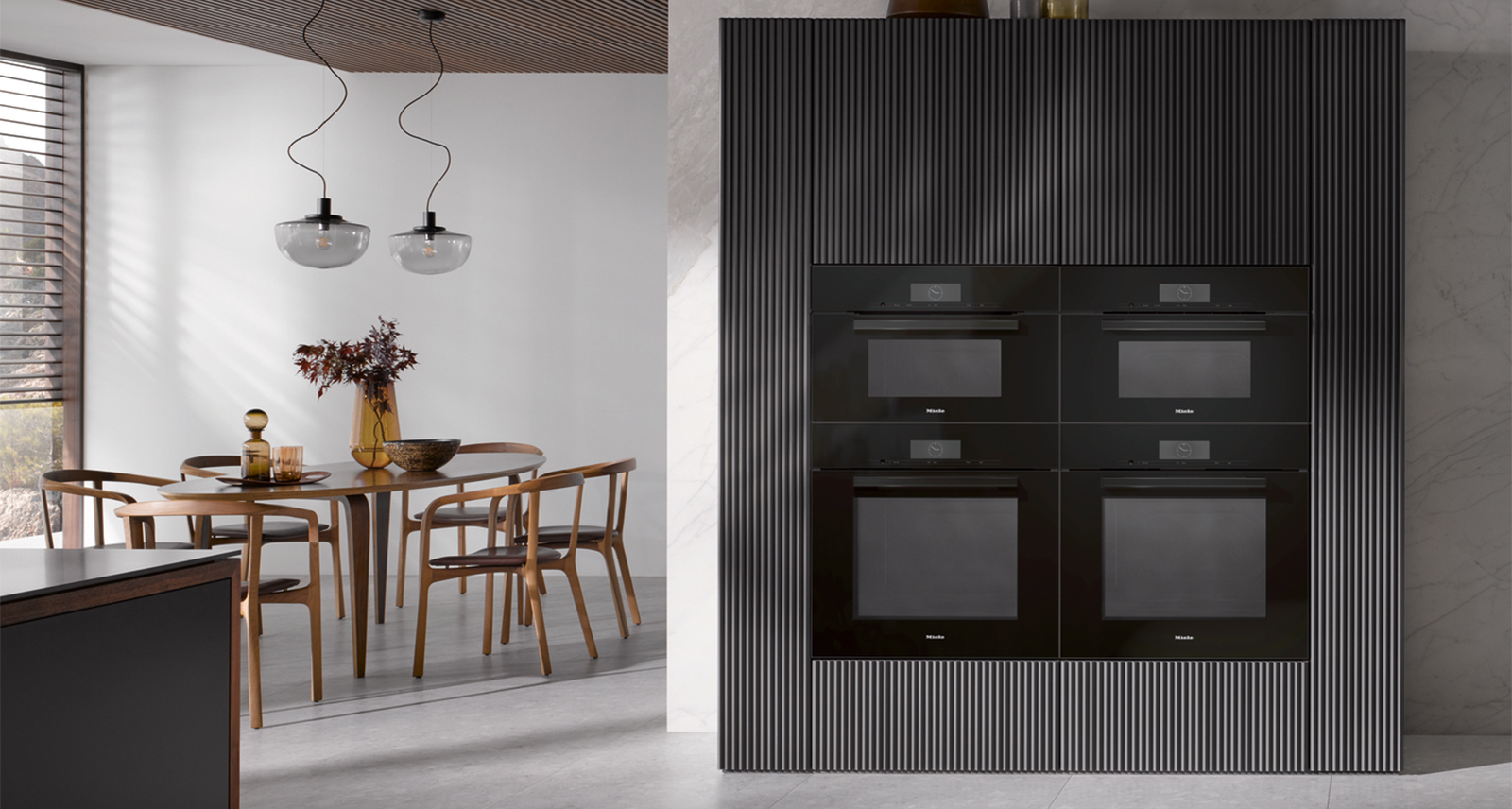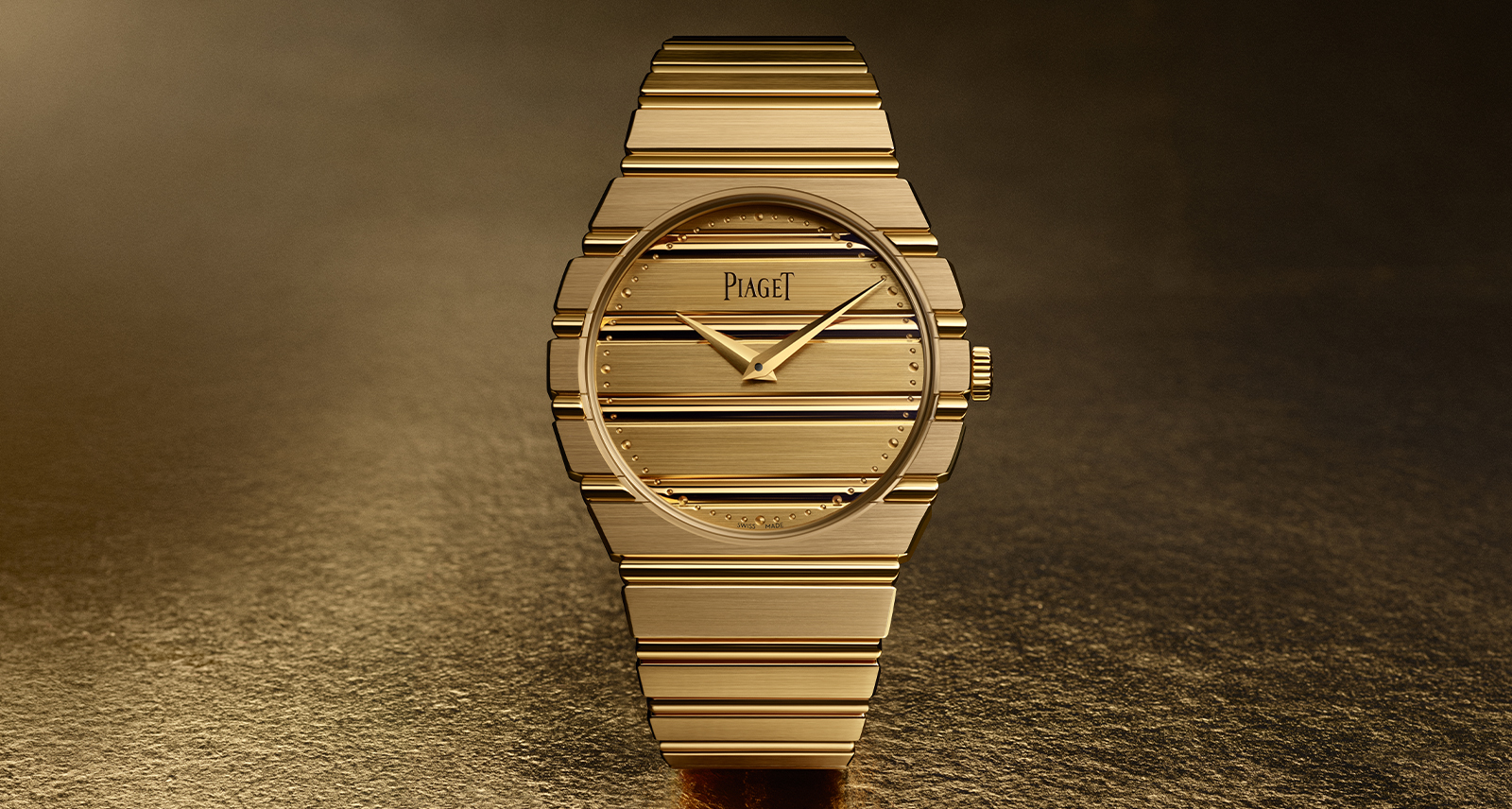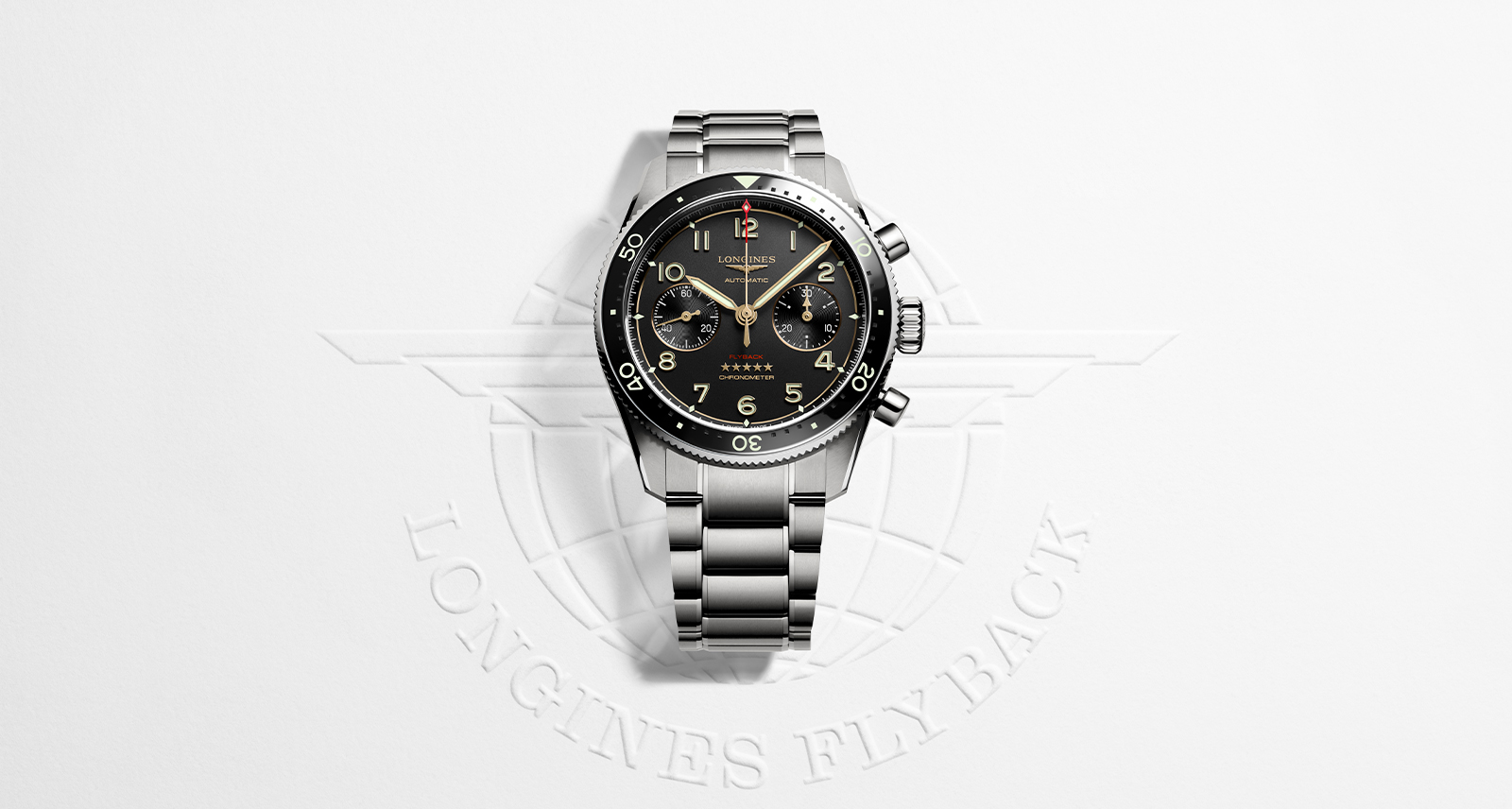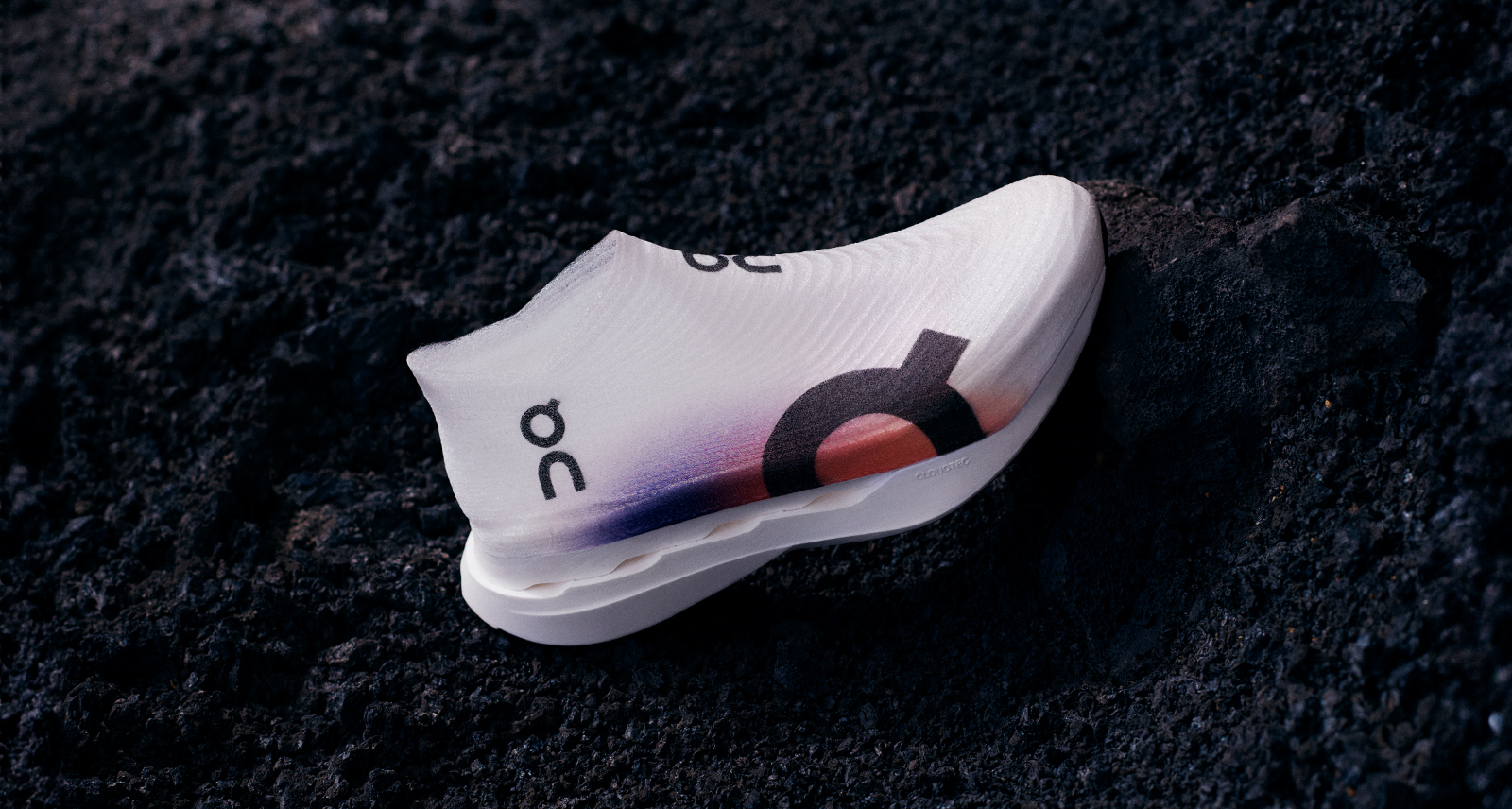Daytona Dreams: Recapping the Latest Big Step in Endurance Racing
At 1:40 p.m. on the last Saturday in January, the Rolex clock began its 24-hour countdown at the Daytona International Speedway as 61 finely-tuned track cars left the starting grid. For the rest of that day and well into the next, some of the world’s best drivers competed to take home one of the most coveted prize packages in motorsports: a Daytona trophy and an engraved Rolex Cosmograph Daytona chronograph.
Rolex has been an important presence at the Daytona International Speedway since 1959, before becoming the Title Sponsor of the twice-around-the-clock event in 1992. The rules of the Rolex 24 at Daytona have evolved over the decades, as have the cars themselves, but the essential facts of the contest remain unchanged. Teams of drivers must push themselves and their vehicles to the limit as they race around the clock for 24 hours straight, battling darkness, foul weather, fatigue, and each other. With a total length approximately equal to a drive from New York to Los Angeles, and an average speed of 305 km/h, the Rolex 24 at Daytona has been the backdrop to dramatic showdowns throughout its history, from the legendary Ford vs. Ferrari contests of the 1960s to upsets by Jaguar and Nissan in the ‘80s and ‘90s to the Dodge Viper’s surprise overall win in 2000.
The 61st edition of this demanding contest in 2023 saw a new kind of vehicle take to the track. For the first time Le Mans Daytona hybrid (LMDh) cars joined the LMP2, GTD Pro, GTD, and LMP3 categories on the grid. Not only did this year’s race mark the debut of this game-changing technology, but it also kicked off a transatlantic agreement that will enable LMDh machines from Porsche, BMW, Acura, Cadillac, and others top-tier manufacturers, to compete across the globe, including at the 100th 24 Hours of Le Mans race later this year. These nine LMDh cars, competing as part of the revived Grand Touring Prototype (GTP) class, are just the latest stakes-raising evolution in a race that is never short on excitement.
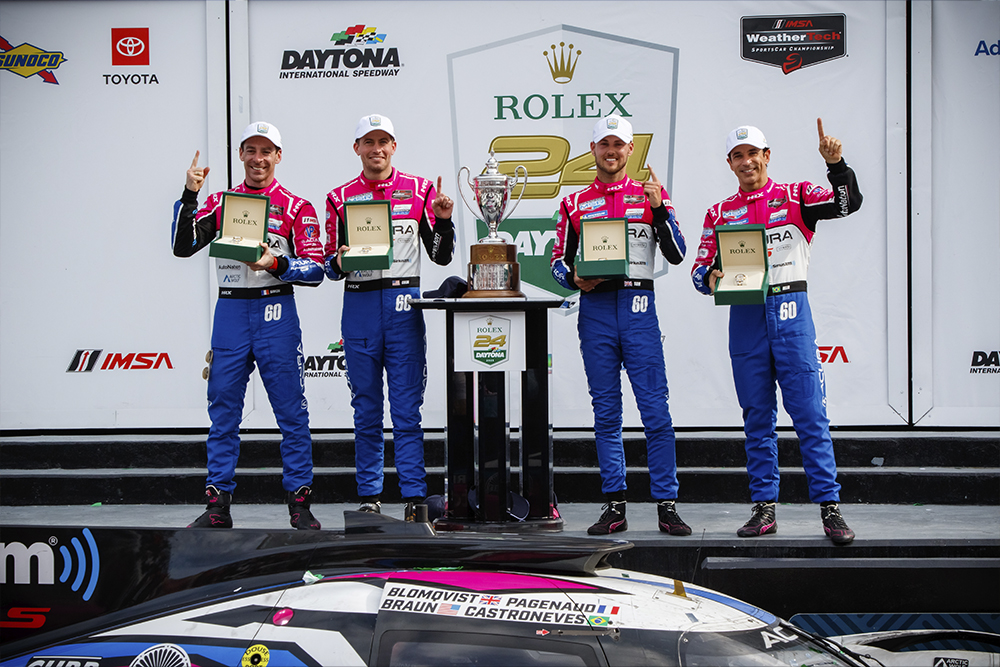
“This year’s race was the first of a whole new generation of race cars and while there has been teething problems, in general, these cars have proven to be fairly reliable,” says Hurley Heywood, five-time overall winner at the Rolex 24 At DAYTONA and three-time overall winner of the 24 Hours of Le Mans. “I think the future of endurance racing is really strong and I’m looking forward to seeing these new cars run on a full-time basis as they go on to race at the centenary edition of the 24 Hours of Le Mans.”
It was a tightly contested match among all five categories on the 5.73-kilometre tri-oval circuit, with the winning car in the Le Mans Prototype 2 (LMP2) class eking out a victory by just 0.016 seconds. In addition to having the day’s fastest lap, it was Tom Blomqvist in Meyer Shank Racing’s Acura ARX-06 who took the chequered flag after 783 laps, clocking in at 24:01:19.952.


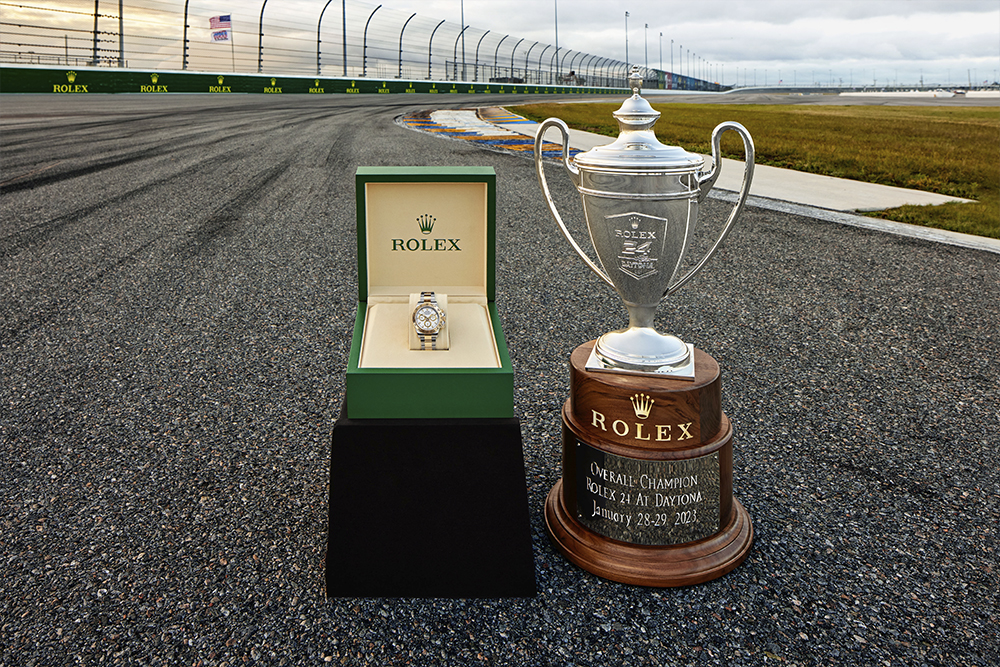
“I have to thank my team; they have done a phenomenal job with this new car and we’re so good with our strategy, staying calm and relaxed throughout. The feeling on the last lap was incredible, nothing beats it,” Blomqvist says, reflecting on his team’s second consecutive win at Daytona. “This race is so special and that’s mainly because of the watch. Ask any driver and they will say it’s the dream to win a Daytona.”
Learn more about Rolex and its connection to motorsport here.
